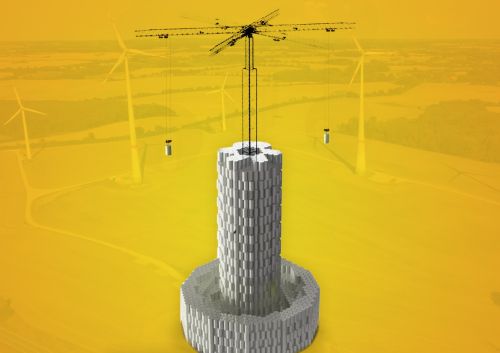Great question! After my 'environmental awakening' nearly 20 years ago I read a stack of books and watched a stack of expert documentaries and read a stack of renewable energy stuff - and was just not convinced. The storage to get through winter would cost SO much money that the whole thing was completely insane. So I became a fan of nuclear power. I'm no scientist - but I learned enough from actual nuclear engineers to satisfy my fears as growing up Australian is to grow up anti-nuclear. It's in the cultural air we breathe.
But last year something weird happened. I changed my mind. Why?
The cost of renewables has dropped SO MUCH that we don't have to try and store a few months of electricity to get through winter. Rather, we just Overbuild the renewables! They're 1/4 the cost of nuclear power (Lazard) so we can massively Overbuild renewables to get through winter.
The intermittency of wind and solar can be solved with OS - Overbuild + Storage like OFF-river Pumped Hydro Electricity Storage (PHES). OVERBUILD: What to do if winter halves your electricity from renewables? Easy - double the renewables! It’s not rocket science. Simply OVERBUILD wind and solar! Aim for winter as your minimum requirement - and then the rest of the year you have an energy surplus you can do cool new things with. Overbuild used to be inconceivable but renewables have crashed to a tenth what they cost just over a decade ago! A renewable engineer tracked Australia’s terrible La Nina rainy year of 2022, releasing the weather and hypothetical 100% renewable energy impact data daily. At only 100% penetration of the grid, the storage required was quite expensive. But overbuilding the wind and solar farms just 70% reduced the storage to almost zero.
A near 100 per cent renewables grid is well within reach, and with little storage
Also, spread your overbuild out over as wide an area as politically possible. HVDC transmission is so efficient it only loses 3% per 1000 km. EG: Perth afternoon sunshine could power dark Sydney evenings 4000 km away, only losing 12%. Extra spread reduces storage costs.
For $100 billion, Australia could have a low cost and reliable zero emissions grid Basically, when we set WINTER as our building target we can reduce storage to 2 days for each city. Then if one city has a REALLY bad few weeks, they can borrow power from other cities in the area.
STORAGE: OFF-RIVER Pumped Hydro Electricity Storage: (PHES). On river is limited by potential sites and environmental concerns about damaging sensitive ecosystems. But if we turn our gaze to completely closed loop OFF-RIVER pumped hydro systems, satellite maps show most continents have 100 TIMES the potential topography we need. This is safer and cheaper - as it avoids building expensive spillways for 1 in 500 year flash floods events. When finished, pump the water in from the nearest river - which can be dozens of kilometres away. Cover in floating solar panels. It will lose some water to evaporation, but only 10% the water lost to cool thermal coal or nuclear. Blakers presents the data.
Global Atlas here
Global Greenfield Pumped Hydro Energy Storage Atlas
But sodium batteries - yes sea salt batteries - are 30% cheaper than lithium and don't use any copper, cobalt, lithium or rare earths. So they're also an option. They're already being built in stackable cargo-carrier boxes in Australia.
(And iron batteries are coming along which could store power for 4 days.)
And the cost? The whole system ends up being cheaper than coal.
100% renewable electricity in Australia
So rather than see Storage and extra HVDC powerlines as an extra expense, they are more like your annual Costco membership that gets you in to the cheap energy supermarket. After all, Blakers says the Storage and HVDC together are only 30% of the cost of a renewables grid - giving you super-cheap and abundant energy in the 70% rest-of-cost in the Overbuilt renewables themselves.
But wait there's more!
Have you heard of SUPER-POWER? What do we do with heaps of super-cheap, super-abundant EXCESS energy the rest of the year? That's when we can desalinate extra water and store it in reservoirs, make hydrogen or synfuel, or even run a gasifier plant to process rubbish tips into useful building products.
Gasification – waste into fuel and building materials


